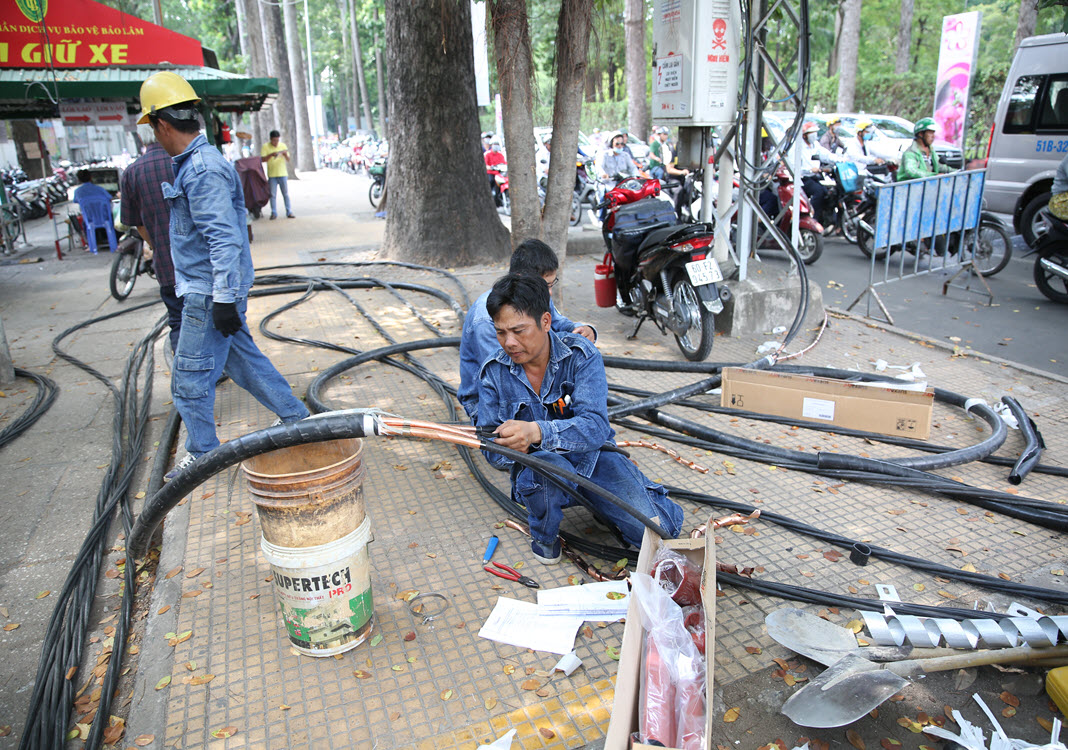There are three criteria for assessing goods and services— including prices, quality and customer service. However, power consumers in Vietnam have no basis for assessment as there is only one electricity supplier in the market.
With the Politburo’s Resolution 55-NQ/TW dated February 11, 2020 on the direction for the strategy for national energy development to 2030 with a vision to 2045, consumers are expecting to have a dynamic electricity market as is the case of the telecom market.
According to a draft by the Electricity Regulatory Authority under the Ministry of Industry and Trade, the competitive power retail market will start in 2021, with priority for big consumers first, those who are supplied power through the 110kV line. The expansion of the market, but with conditions, mainly for power retail to daily activities, will be carried out after 2025.
Still distant
According to the Prime Minister’s Decision 63/2013/QD-TTg dated November 8, 2015, the road map for the establishment and development of the electricity market will cover three stages, including the competitive electricity generation market, the competitive electricity wholesale market and the competitive electricity retail market. The competitive electricity wholesale market has been developed for nearly two years, while the competitive electricity retail market, which is in the preparatory phase, is expected to start next year.
In general, two stages of the road map have been executed. However, it is not known when the last stage, the competitive electricity retail market, will reach consumers who are households and businesses, as this stage comprises four steps: The preparatory step (2020-2021), the participation of big consumers in the electricity wholesale market (2021-2023), the selection of electricity retailers by big consumers (2023-2025) and the expansion of the electricity retail market (after 2025) with priority for big consumers.
Under the consumer classification by the electricity sector, there are four groups of consumers— including production, administration, daily activities and business. Consumers in the production group makes up the largest share, about 60%, with the lowest average price. The group of consumers for daily activities (households) accounts for only 30% of the total power consumption.
Like in many other countries, the number of outlets of household consumers is many times as much as that of consumers in the production group though their power consumption is lower. For example, power consumption for daily activities accounts for 35% of total power consumption in France but makes up 86.6% of the number of outlets. Therefore, the installation of new generation power meters takes up more time and resources.

More options for consumers
On the supply side, the electricity market has three main components—namely electricity generation, transmission and distribution. Except for transmission, with its own features of no competition due to natural monopoly, the two other components have been proven to get more effective with competition.
The shortcoming of the electricity retail market in Vietnam is the selection of power distributors by household consumers. Considering the proposal of the Electricity Regulatory Authority that the priority of selection is given first to big consumers who are producers while household consumers must wait until after 2025, it is not known when this group of consumers can get this option.
When the system of competitive electricity distributors is established, the market principle will force those distributors to compete in prices, quality and customer service, and the end-users will benefit. With prices, for example, distributors will have to make clear the pricing structure, such as the percentages of the price of production of one kWh, the transmission cost (which must be offered through bidding for using the State infrastructure), taxes and fees.
When many electricity suppliers are available at the same time, competition will allow consumers to make a choice easily. In France, there are 30 distributors of power for daily activities among 43 power distribution firms nationwide after the electricity market was opened in July 1, 2007. Consumers can make comparison and selection for their own needs, and make changes easily with some movements online or via phone calls. They can consider prices, quality and customer service. With prices, they can even weigh between the fixed prices over 1-4 years and the market prices, as there are differences between fixed prices (for monthly subscribers) and consumption based prices.
To better serve customers, power distribution companies have installed the advanced metering infrastructure (AMI) so that consumers do not have to worry about the accuracy of the power meters. In addition, they allow consumers to make even monthly payments in a year, which means that the same payment is made for every month, and the surplus or deficit is calculated at the year’s end to help customers better manage their expenditures based on their consumption history. The distribution companies also often give advice on economical, effective power consumption, providing customers comparisons for power consumption between them and households of the same size and housing area so that they could know whether they are wasting power.
The road map which allows consumers to make more choices of power for daily activities in Vietnam is available, but it may be a long time to exercise this right as planned, and it’s also uncertain whether the plan can be carried out well. Vietnam has an advantage in solar power. If the Government has support for conversion to renewable energy as many countries do, households should think of installing solar panels for their own use.
By Khanh Binh









